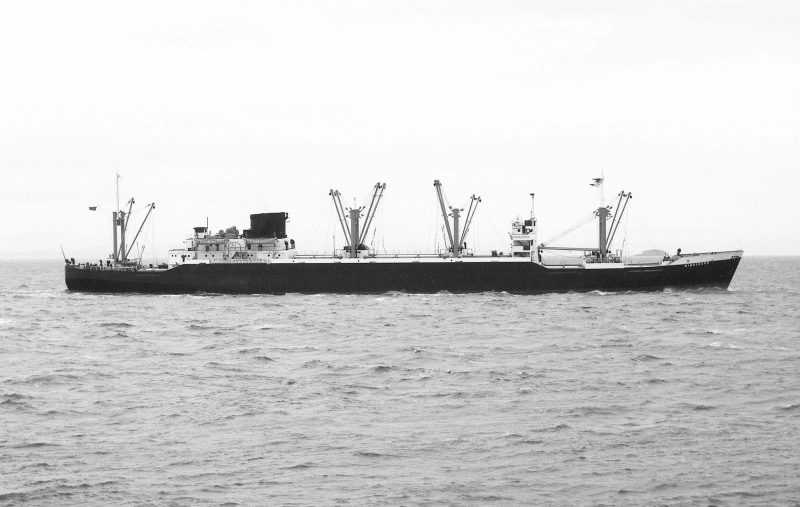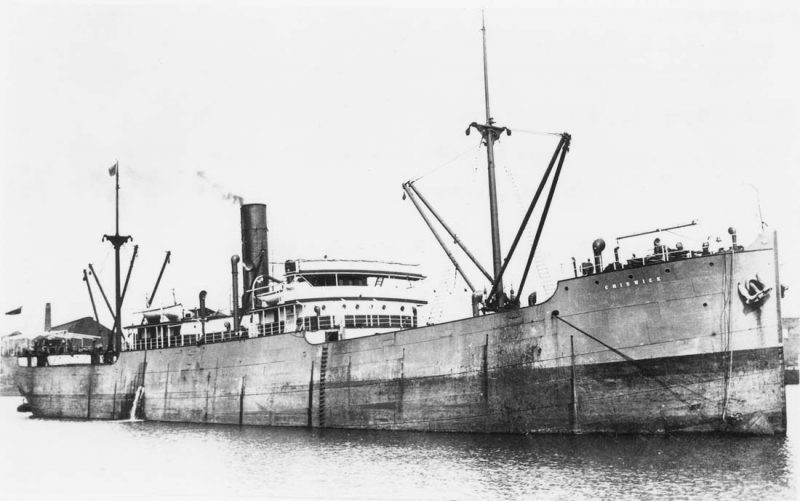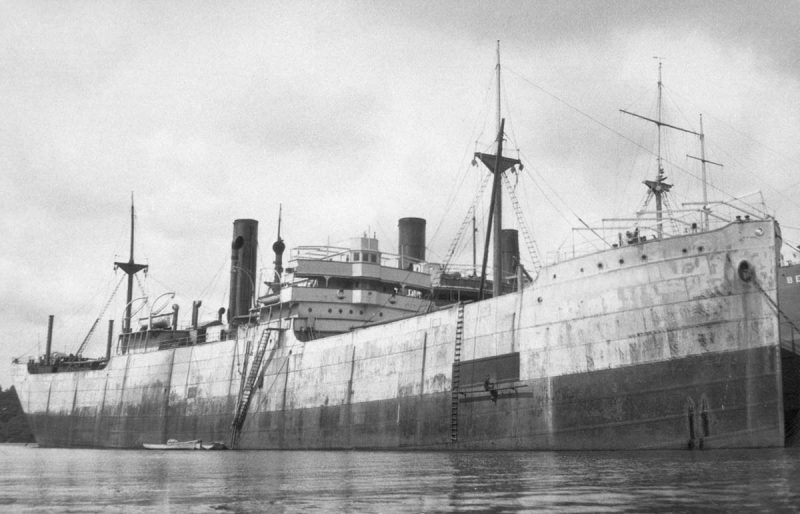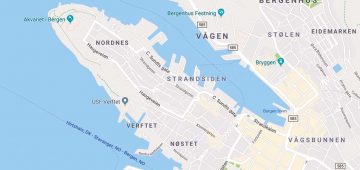The Britain Steamship Co. Ltd.

Three generations of the Watts family owned a very large fleet of grey hulled tramps with salmon pink boot topping and dark grey masts and derricks. The Watts family started trading at Blyth in Northumberland in the eighteenth century, and by the 1850s Edmund Hannay Watts was acting as a shipbroker, shipowner and loading agent for sailing ships e.g. Brilliant 204/1839 and Sultan 223/1850 trading to the Continent, Iberia and the Baltic with coal. In 1857, a shipping business was begun under the style of Watts, Milburn & Company, Watts being the senior partner and with the first steamers being Shearwater 682/1864 and Gosforth 833/1866, and the export of coal was naturally a major interest. William Milburn was a butcher by trade and held shares in the ships on the 64ths principle, his later shipping company became one of the four constituent founder companies in 1914 of the Commonwealth and Dominion Line (Port Line from 1937).
A London office was opened in 1869 with Watts moving to London to take control of the business. Two steamers with the same name, Surbiton 965/1869 and Surbiton 1,373/1877, were the first in the fleet to be named after a London suburb. The first Surbiton was lost with all hands on 3rd December 1873, and the second Surbiton sailed from New York on 18th February 1879 and disappeared in the North Atlantic. Coal cargoes were found for the fleet by the simple but drastic method of taking over many North East collieries by a company founded in 1872 by Edmund H. Watts as Watts, Ward & Company. In an average year, three colliers and tramps were launched for the coastal and overseas trades of Watts, Milburn and Company, which extended to Australia and the Far East.

In 1879, William Milburn and Edmund Hannay Watts parted company, with the Watts ships then being registered under Watts, Ward and Company, which then traded worldwide. By the early 1880s, the coastal coal trade was controlled from Newcastle and deep sea tramping from London. A fleet of over a dozen tramps had been registered under this company when on 8th December 1884 the Britain Steamship Co. Ltd. was registered in London. Fifteen new tramps of between 3,500dwt and 4,500dwt were then completed by William Gray at West Hartlepool for the new company between 1884 and 1890, with almost all named after London suburbs. More collieries were purchased to provide cargoes for these fifteen steam tramps, as well as for the others under Watts, Ward & Company. Six of these fifteen steam tramps became marine losses e.g. Brentford was wrecked in 1888, and seven of them were sold on for further trading to Japanese owners.

Fourteen steam tramps were owned by Watts, Ward & Company in July 1891 when Dunholme was sunk by collision off Dover while on a voyage from Antwerp to Rio de Janeiro. In 1893, three large tramps named Dulwich, Kilburn and Woolwich were completed by Ropner and Son at Stockton, but in 1894 Highbury was ashore near Alexandria while on a voyage from Newport with coal and coke and became a total loss. In that year, Anerley and Finsbury were transferred from the management company to the new Britain Steamship Co. Ltd., with Finsbury carrying the first cargo of American cotton up the new Manchester Ship Canal. In 1896, Mr. Ward died and the management company was renamed as Watts, Watts & Company.

Twenty two tramps were registered under the new company in 1899 when Wandsworth was wrecked at the Spanish Battery at Tynemouth while inward bound from Benisaf with iron ore for Jarrow. During the Boer War, Edmund H. Watts secured a Government contract to carry hay from England and South America to South Africa. He had four new tramps recently delivered by Ropner and Son, and he then ordered five larger tramps of 7,000dwt for delivery in 1901/02 as Tottenham, Beckenham, Epsom, Ilford and Ascot, with the first three named from Ropner and Ascot being the first Clyde built tramp. Twickenham of 6,500dwt was chartered from Furness, Withy & Co. Ltd. in 1902 to fulfil commitments at this busy time.

This quintet were the last completed while Edmund H. Watts was in control, for he died in 1902, his name living on in the Watts Naval Training School in Norfolk, part of a large estate he purchased and presented to Dr. Barnardo for use as a training centre for boys who wished to make the sea their career.
F. Shadforth Watts, his son, succeeded him and he concentrated on the American trade, setting up the Pensacola Trading Co. Ltd. in Texas to charter ships for a service from the U.K. and Continent to American Gulf ports as well as in Mexico and the Caribbean. The engines aft tramp August Belmont and the engines ‘midships tramp E. O. Saltmarsh were built for this company and managed by Watts, Watts and Company, and in 1908 a new service was inaugurated between Seattle and Prince Rupert (BC). Maritime losses continued with:-
- Woolwich sunk on 25th February 1903 off Maasluis after a collision
- Finsbury sailed from Kobe on 22nd September 1903 and disappeared
- Anerley wrecked on 1st August 1904 twenty miles from Pusan, Korea
- Chatham sunk in the Suez Canal on 5th September 1905 having failed to extinguish a fire in her cargo
- Hounslow wrecked in April 1906 on the Costa Rican coast on a voyage from Esquimalt
- Windsor wrecked on 2nd February 1908 on Pelsart Reef, Western Australia while on a voyage from Fremantle to Hong Kong with sandalwood, five crew lost
- Kilburn wrecked on 19th May 1910 on Ethel Reef, Fiji while on a voyage from Newcastle (NSW) to Guaymas
- Tottenham wrecked in February 1911 off Juan de Nova Island in the Mozambique Channel
In 1904, Beckenham sailed non-stop from the U.K. to Japan with a dangerous cargo of 300 tonnes of cordite, nitroglycerine and picric acid, steaming 16,000 miles to avoid the Suez Canal and shipping lanes. A number of second hand tramps were purchased from 1905 onwards, enabling seven of the older tramps to be sold to Japan. In 1905, the company acted as agents for the purchase and immediate resale of tramps to Japanese owners. Five tramps with American names were acquired from the Mediterranean and New York Steamship Co. Ltd. for resale to Japan, although Powhatan was traded for a few years. The fleet was 22 tramps strong in 1908 when Chiswick carried cable to Australia for laying between Victoria and Tasmania. At this time, a French associate company, Societe d’Importation de Charbons, was established in Nantes, St. Nazaire and Tours. In 1912, Watts, Watts and Company was made into a limited liability company, and the few remaining vessels under it transferred to the Britain Steamship Co. Ltd.
Five new tramps of 7,000dwt were completed for the company in 1911/12 as Isleworth, Blackheath, Twickenham, Highbury and Finchley with the first three tramps coming from the Stockton yard of Ropner and Son. Isleworth was wrecked almost immediately on Chebucto Head on the eastern seaboard of Canada while on passage from Boston to Louiseburg in March 1912. A casualty at this time was Woolwich (2) on 23rd February 1911 after a collision in the Tyne and she was beached on the south side of the river and repaired.
Subscribe today to read the full article!
Simply click below to subscribe and not only read the full article instantly, but gain unparalleled access to the specialist magazine for shipping enthusiasts.






Comments
Sorry, comments are closed for this item